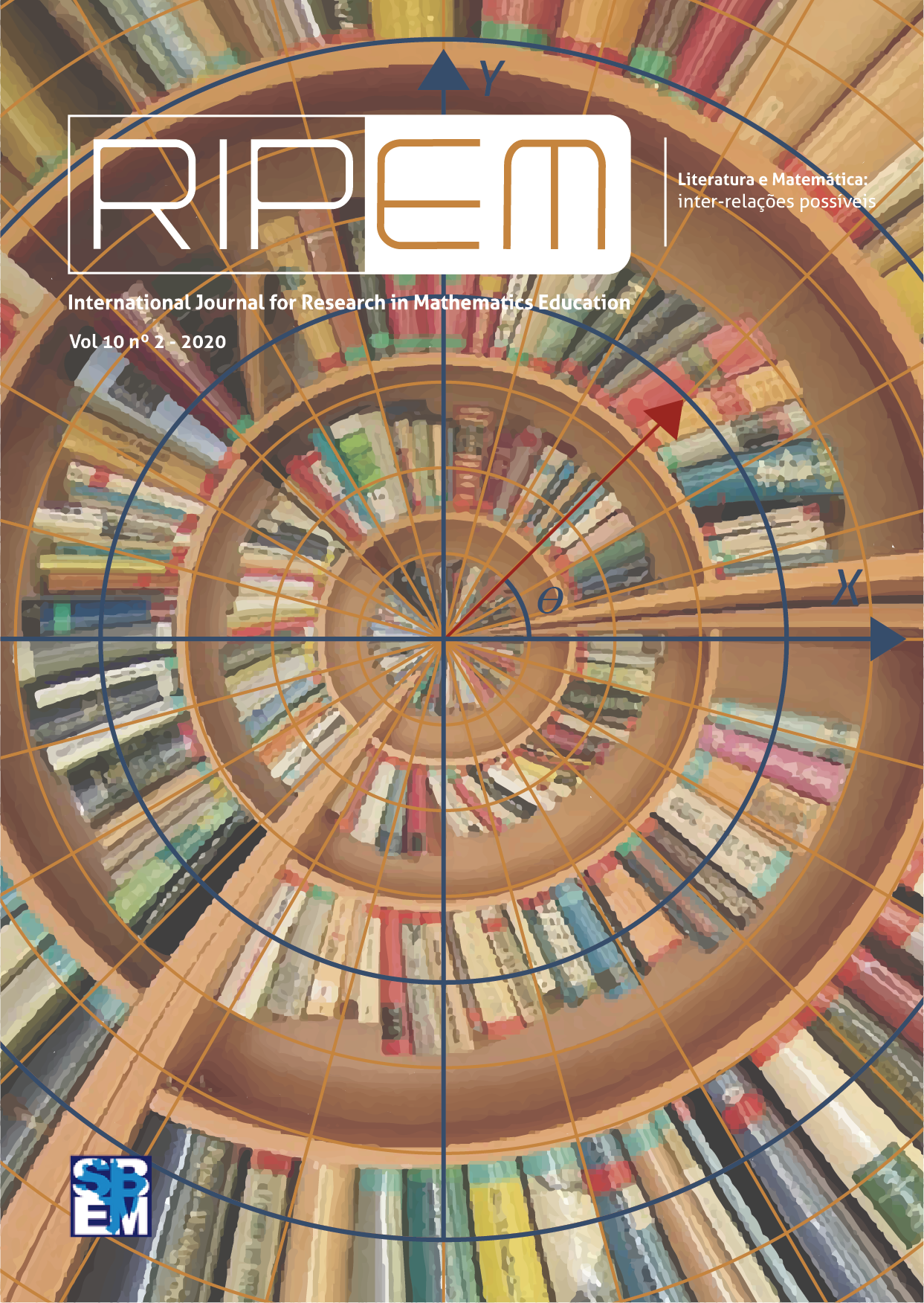OuLiPo: juegos matemáticos en la literatura
DOI:
https://doi.org/10.37001/ripem.v10i2.2172Palavras-chave:
Literatura Potencial, OuLiPo, Traba, Experimentación Literaria, MatemáticasResumo
OuLiPo – Ouvroir de Littérature Potentielle – was created in 1960 at the initiative of Raymond Queneau – a man of letters interested in mathematics – and François Le Lionnais – a man of science interested in literature –, and supported by a group of writers , mathematicians and painters. OuLiPo rejects inspiration as the only source of creativity; the restriction – the ‘contrainte’ – is its creative engine. In this paper we will give some examples of oulipian texts written under mathematical restriction. Essentially, mathematics underlies the structure of texts: combinatorics, geometry, topology or graph theory will appear as inspiring patterns in all these proposals.
Downloads
Referências
Arellano, C., Munárriz, J., & Rhei, S. (2011). Sextinas. Pasado y presente de una forma poética. Madrid: Hiperión.
Audin, M. (2006). Géométrie. Paris: Edp-Sciences.
Audin, M. (2010). L’Oulipo et les mathématiques. Une description. Preprint página web de la autora. Consultado el 7 de agosto de 2019 en http://irma.math.unistra.fr/~maudin/ExposeRennes.pdf
Audin, M. (2011). Mai quai Conti. Oulipo. Consultado el 7 de agosto de 2019 en https://oulipo.net/fr/mai-quai-conti
Bose, R.C., Shrikhande, S.S., & Parker, E.T. (1960). Further results on the construction of mutually orthogonal Latin squares and the falsity of Euler's conjecture, Canadian Journal of Maths 12, 189-203.
Duchêne, L., & Leblanc, A. (2010). Rationnel mon Q. 65 exercices de style. Paris: Hermann.
Dumas, J.G. (2008). Caractérisation des quenines et leur représentation spirale, Mathematics and Social Sciences 184 (4), 9-23.
Le Tellier, H. (1998). Joconde jusqu’à cent : 99 (+1) points de vue sur Mona Lisa, Paris, Castor Astral.
Macho Stadler, M. (2013). Mai quai Conti. DivulgaMAT. Consultado el 7 de agosto de 2019 en http://www.divulgamat.net/index.php?option=com_content&view=article&id=14666&directory=67
Macho Stadler, M. (2016). OuLiPo: un viaje desde las matemáticas a la literatura, Tropelias: Revista de teorÃa de la literatura y literatura comparada 25, 129-146.
Le Tellier, H. (2002). Joconde sur votre indulgence, Paris: Castor Astral.
Oulipo. (1973). La littérature potentielle. Paris: Gallimard.
Oulipo. (1981). Atlas de littérature potentielle. Paris: Gallimard.
Oulipo. (1987). La bibliothèque oulipienne I. Paris: Ramsay.
Oulipo. (2003). La bibliothèque oulipienne VI. Paris: Le Castor Astral.
Perec, G. (1976). Alphabets, Cent soixante-seize onzains hétérogrammatiques. Paris: Galilée.
Perec, G. (1992). La vida instrucciones de uso, Barcelona: Anagrama. (Original publicado en 1978)
Perec, G. (1993). Le cahier des charges de la Vie mode d’emploi. Paris: C.N.R.S. et Zulma
Perec, G. (2001). Especies de espacios. (Traducción de J. Camarero). Barcelona: Montesinos
Queneau, R. (1961). Cent mille milliards de poèmes. Paris: Gallimard
Queneau, R. (1965). Bâtons, chiffres et lettres. Paris: Gallimard
Queneau, R. (2000). Ejercicios de estilo. (Traducción de A. Fernandez Ferrer). Madrid: Cátedra
Ribière, M. (2004). Georges Perec. El andamiaje de las vidas y sus instrucciones de uso. Quimera 244, 36-38.
Roubaud, J. (1995). PoesÃa, etcétera: puesta a punto. (Traducción de J.L. del Castillo Jiménez). Madrid: Hiperión.
Slanka, C. (2008). Cómo decirle adiós. (Traducción de J. Carmona Lombardo). Barcelona: El Aleph.
Steinberg, S. (1949). The Art of Living. New York: Harper & Brothers.
Varios autores (2012). Cien mil millones de poemas. Madrid: Demipage.
Publicado
Como Citar
Edição
Seção

Este trabalho está licensiado sob uma licença Creative Commons Attribution-NonCommercial-NoDerivatives 4.0 International License.








